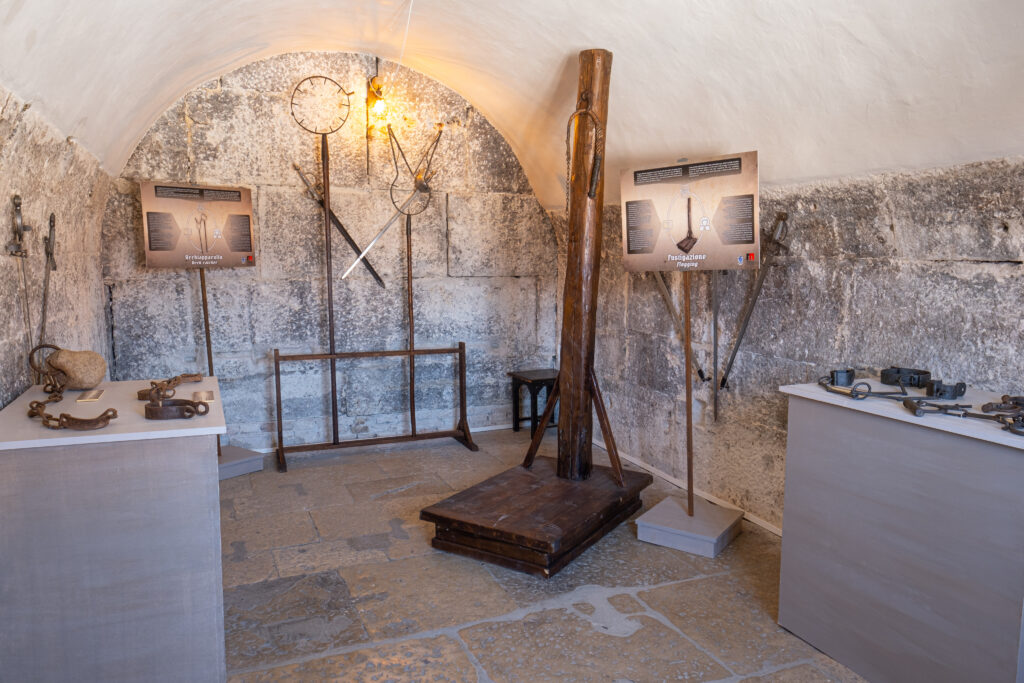The Stocks are a punitive tool, used during the Middle Ages. Unlike the pillory, where the restraint boards are fixed to a pole and placed around the arms and neck of the condemned, forcing him to stand, stocks consist of a structure made specifically for the containment of the feet by locking the ankles.
In the prisons they were used to immobilize the prisoner to better whip the soles of the feet.
Torture in the Middle Ages
Widely used in medieval times, the treatment was known in much older times. It is in fact already mentioned in the Bible, where it is reserved for Paul and Silas, disciples of Jesus: «He, having received this order, threw them into the innermost cell of the prison and clasped their feet in the shackles» (Acts 5:24).
In 1989 the city of Dermott, Arkansas (US) passed a curfew law punishable by up to thirty days in prison for the offender and up to two days of stocks for his parents. The initiative, however, was abandoned, because the city did not have any logs and had not even allocated funds to build them.
Curiosities about the Stocks
In 2020, during the COVID-19 pandemic, the police in Chinu, Colombia, put to the stocks for a few hours residents who had violated the mandatory quarantine regime.
Palazzo delle Prigioni in Venice: the prison and the sentences of the condemned
The Palazzo delle Prigioni offers the opportunity to view the instruments of torture, prisons and period clothes still today, as well as learn about the stories and legends of a distant Venice. A piece of history witnessing the death and torture machines once used as instruments of justice.
